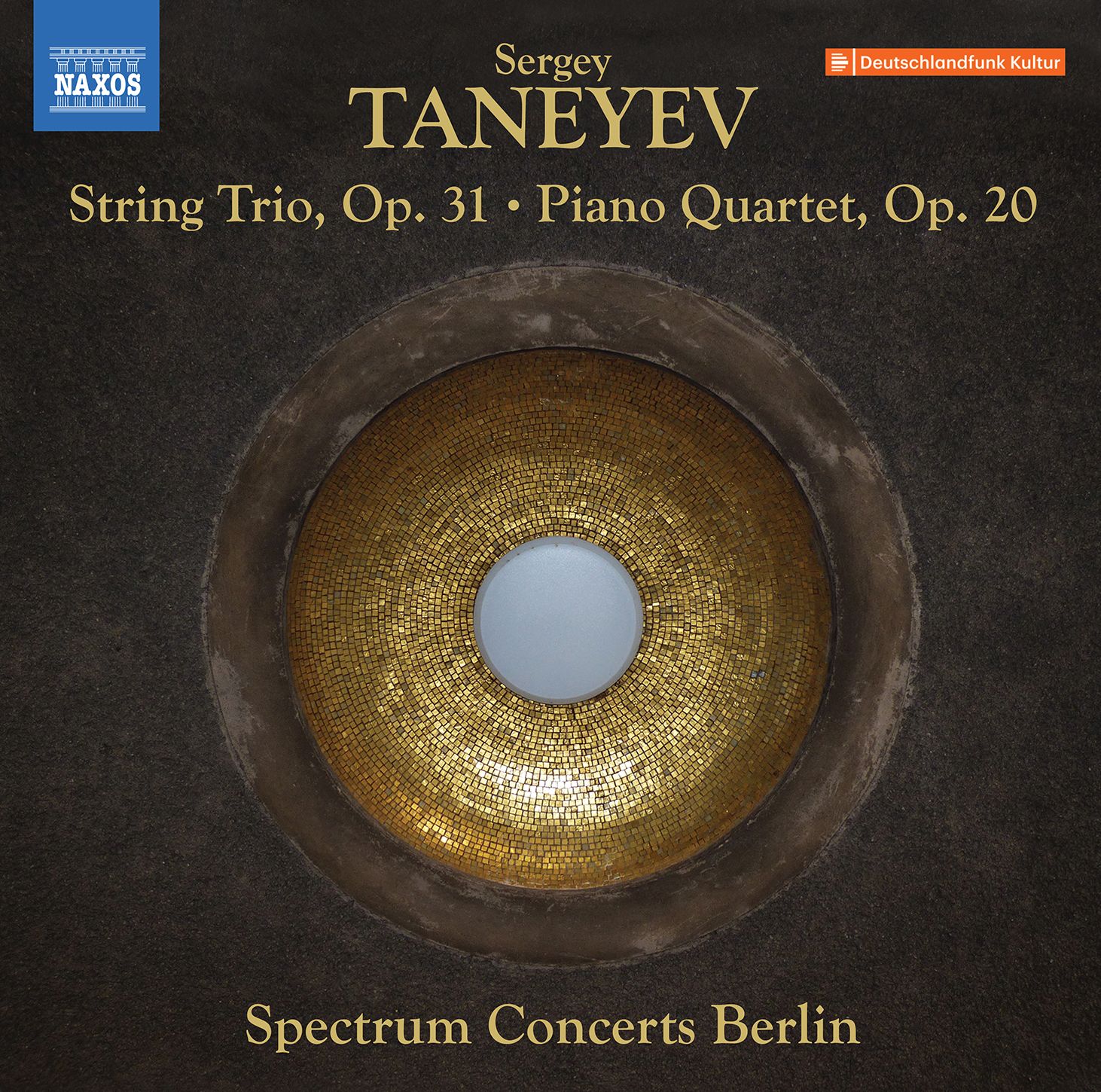Taneyev Chamber Music on Naxos

Borni n 1856, Sergey Ivanovich Taneyev is one of those composers one is more likely to emcounter in history books or referenced in booklet notes than to actaually hear the music. Mikhail Pletnev released a significant DG recording of John of Damascus (coupled with Rachmaninov's The Bells) and if you follow this Amazon link you will see my (commissioned) Amazon review as well as the abilityto purchase a second0hand copy for, at the time of writing, the princely sum of 72p.
The String Trio is instantly interesting in that it was originally scored for violin, viola and tenor viola (an instrument tuned a perfect fourth lower than the standard viola); it is played on this current recording by cello.
Spectrum Concerts Berlin captures the flightiness of gesture but also the complexity of writing (Taneyev was a great contrapuntalist) in the first movement:
For his love of process, Taneyev is sometimes called the “Russian Brahms” (seomthing of which is mentor, Tchaikovsky, seemed not to have approved!); yet there are passages in this first movement that have a Tchaikovskian stamp on them. It’s a fascinating mix, but it is also important to notice the result is highly individual.
In keeping with the light feel of the work, there is a Scherzino. No missing the “Russianness” of this movement; it almost sounds like a string trio reduction of a Scherzo movement from an early Tchaikovsky symphony!:
The odd moment (and it is a passing moment) of that Scherzino reminds me of the spirit of Beethoven’s “Razumovsky” Quartets. The slow movement, an Adagio espressivo, is simply beautiful, somewhat Beethoveniain itself in its breadth. What is impressive in this performance by Spectrum Concerts Berlin is the way the morph from one movement’s field of emotion to the next. Listen to the yearning phrases, and how the performance is completely unhurried as, like Beethoven can, the composer seems to extricate the listener from the web of time to another plane:
For me, the finale is the epitome of how Taneyev’s contrapuntal explorations can be used in the service of a multi-faceted musical surface; there is plenty of play here as well as linear rigour:
Lovers of the string trio as an ensemble (Beethoven, after all, whote notable examples, as did Mozart) should waste to time in scurrying to the Amazon link below. Boris Mrovtsyn is the superb violinist; Gareth Lubbe the viola player, and Alexey Stadler the fine cellist. Their quicksilver reactions to each other ensure this performance is the very epitome of chamber music.
The Piano Quartet in E-Major, Op. 20 (1906), although written only four/five years before the String Trio, immediately has a more Romantic demeanour. The tensile world of the String Trio is replaced by an adventuring spirit and hig contrasts. The pianist, Eldar Nebolsin, has recorded the Brahms Piano Quartets for Naxos (No. 2 is coupled with the Mahler A-Minor Piano Quartet, well worth a listen; Nos. 1 and 3 appear on a single disc) and this music clearly finds him at ho,e. Contrasts are supremely well judged, and he is a real member of the ensemble as opposed to “star soloist”; in the contrasting lighter moments, Nebolsyn’s touch can be a delight:
This first movement is instructive regarding Taneyev as it shows just how successful he is at larger structures (all three movements of the Piano Quartet, Op. 20 are substantive):
The fantastical nature of the Adagio più tosto Largo is remarkable, as is the composer’s melodic gift. Spectrum Concerts Berlin give a superbly emotive performance, with the themes glowing proudly at climax:
The genius of this piece comes into full focus in the finale, which breathes a contentment which every inch feels like teh logica outcome of the precedeing two movements. This is such a considered performance by Spectrum Concerts Berlin; “loving” is really the only word; do listen to the end as the work’s close is both ravishing and haunting:
In terms of recording (Haus des Rundfunks, Berlin, with one producer from Deutschland Kultur), the String Trio in particular feels a touch dry to my ears. In a sense that has advantages, particularly in terms of the integrity and clarity of lines, so important to Taneyev’s music; and in the Piano Quartet, too, it is certainly true we hear everything.
A Trip Down the Rabbit-Hole
I am thinking of adding an occasional addendum to posts that points from teh recording of the day to other listening adventures and explorations. So, if you want to expand your knowledge of performance of this repertoire (plus learn a new piece in the process) follow this link for the great Russian pianist Maria Yudina playing this Piano Quartet along with the Piano Quintet in G-Minor, Op. 30. And, to go even further down the rabbit-hole, here is Yudina in one of her most famous recordings, to give you an idea of just who we are dealing with: Beethoven’s “Hammerklavier” Sonata in a stunning account from 1954, one of the finest ever recorded (bold claim? have a listen!):
